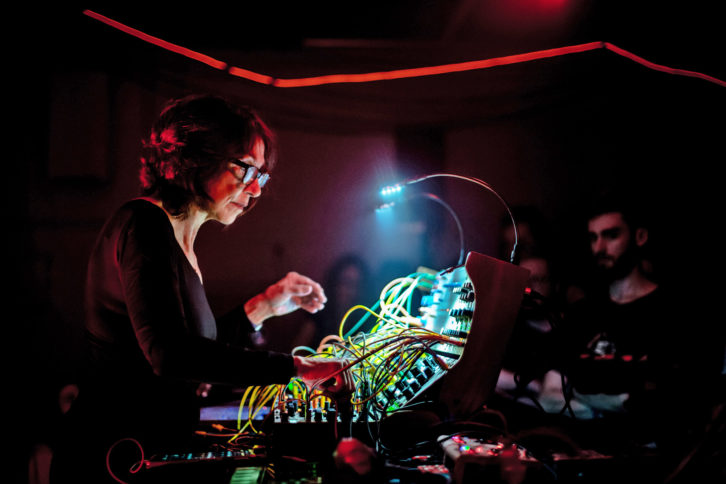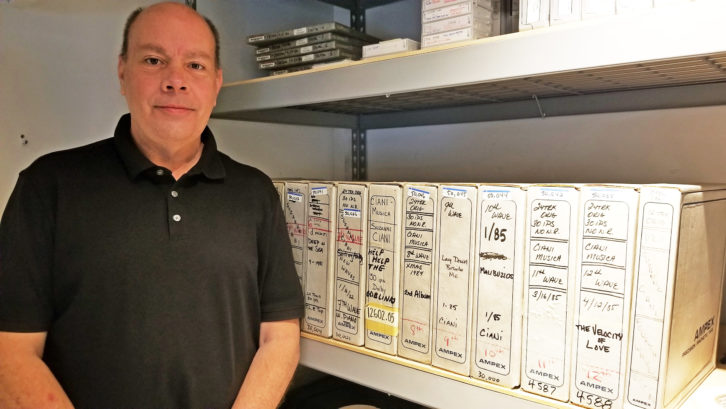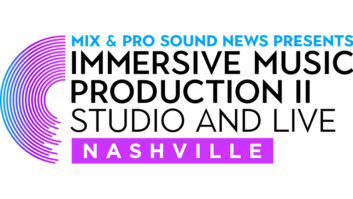
Electronic music pioneer Suzanne Ciani (“Diva of the Diode,” as her website describes her) has begun the preservation of her early music catalog with engineer Bill Smith, head of Archiving at United Recording, Hollywood, Calif.
First up were the 24-track analog masters for Ciani’s debut album, Seven Waves (1982), and The Velocity of Love (1986), with transfer of the 24-track masters to high-resolution digital, followed by the half-inch stereo masters used for the original vinyl LPs as well as the CD releases.
A graduate of Wellesley College, Ciani earned her Masters Degree in Composition from UC Berkeley, studying with early explorers of electronic music such as Max Matthews, John Chowning and Don Buchla. After moving to New York City, she created sound design for advertising through her Ciani/Musica production company—the voice and sounds for Bally’s groundbreaking “Xenon” pinball machine; Coca-Cola’s pop-and-pour sound; sonic logos for Fortune 500 companies—much of it experimental and new.
“When I recorded my first album, it was before home studios even existed,” Ciani recalls. “I would rent out a studio for a weekend and record for that weekend and then mix. I must have used a dozen different studios in New York: A&R, Sound Mixers, Automated, et cetera. You name it, I was there.
“I would haul my Buchla and other gear there,” she continues. “I would be based there for a whole weekend, but keep in mind that the technology was changing all the time. If you look at the Seven Waves album, every piece of gear that I used was credited on the liner notes, and the project was 100 percent electronic. Over a two-year period, the album was recorded with whatever was available in that medium. It started out with just a few designers like Dave Smith and Don Buchla, Tom Oberheim, and a few others. By the time I was recording in 1980, you started to see the internationalization of electronic instruments. You had Yamaha, Roland, Akai and a lot of new players coming in.”
“Suzanne and I discussed at length how to properly archive the analog assets for her first two albums,” Smith explains. “We also discussed the possibility of remixing both albums in the Dolby Atmos format, and I suggested she should also include in any releases a 24-bit/96k hi-res remastering of the original stereo mixes, as well. We discussed how these would best be released either on DVD in DTS 24/96k format or on Blu-ray disc in DTS/MA 24/96, where there is also sufficient room to include uncompressed PCM audio files and perhaps some additional video or interview segments.”
After baking each of the multitrack and 2-track tapes, Smith employed a vintage Studer A827 24-track analog recorder for transfer from Ampex 456 tape, and for the half-inch masters, an Ampex ATR-102 machine for the Ampex 465 tapes transfer. Archiving was done to 24-bit/96 kHz .wav files

“These are albums that I own because I was a producer,” Ciani explains. “There is a lot of complexity in these original analog recordings because it was all electronic music. Even 24 tracks is limited, and one track might be the domain of several different instruments because the sections of the music would change. First of all, when you go back this far, you don’t know what you’re going to find. I have a vault that came with me from New York 30 years ago. Everything is still in there. I knew I had to reclaim the future of these raw materials. And so that’s what we’re doing now. There’s only one set of multi-tracks.
“Now, having the digital transfers of the multi-tracks gives me the option of remixing, but in a different format, like Atmos,” she adds. “A lot of my music has been spatial. For instance, I recently recorded a live quadraphonic LP that was the first quad LP in 30 years. I’m looking forward to working with these archived masters to explore possibilities.”







